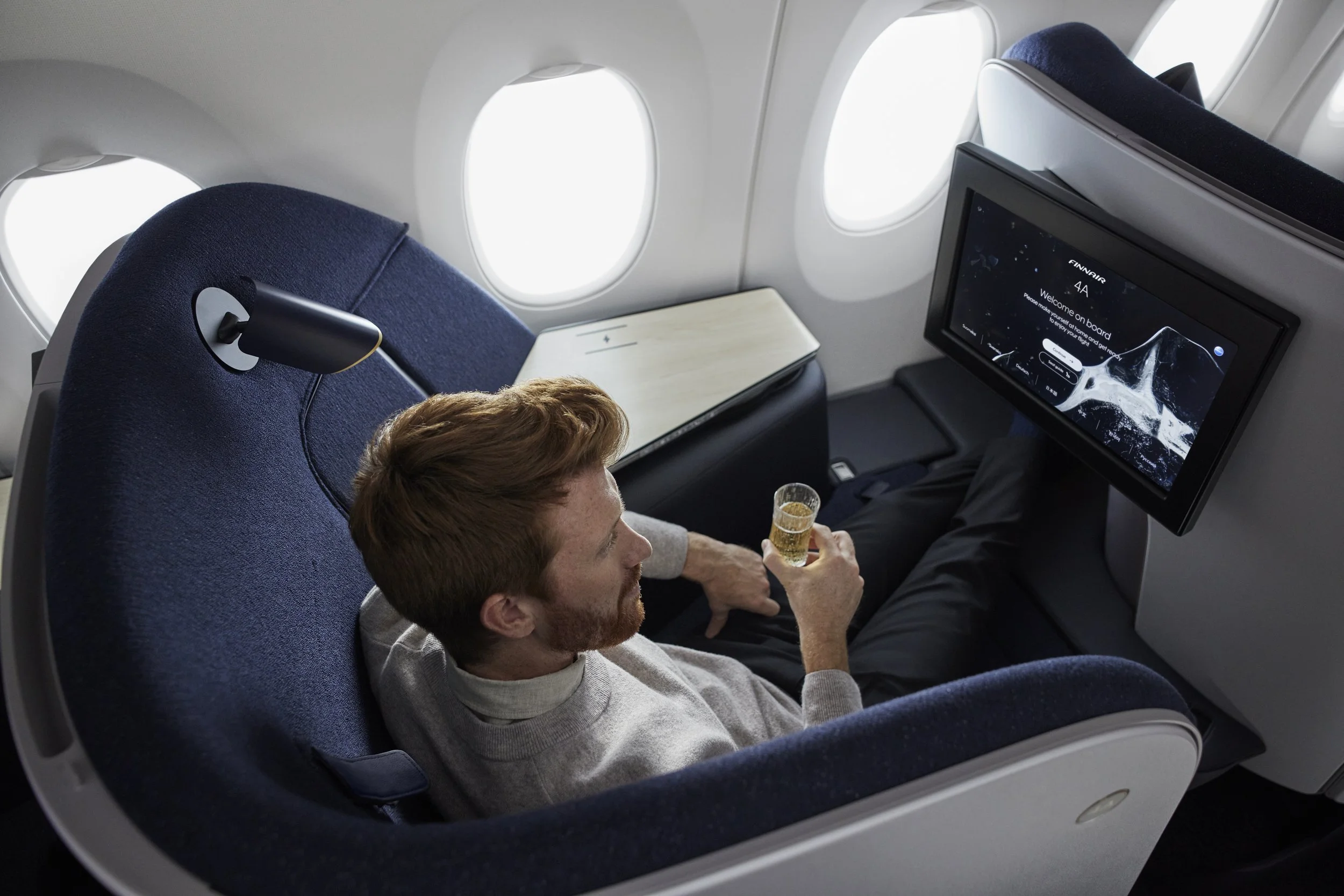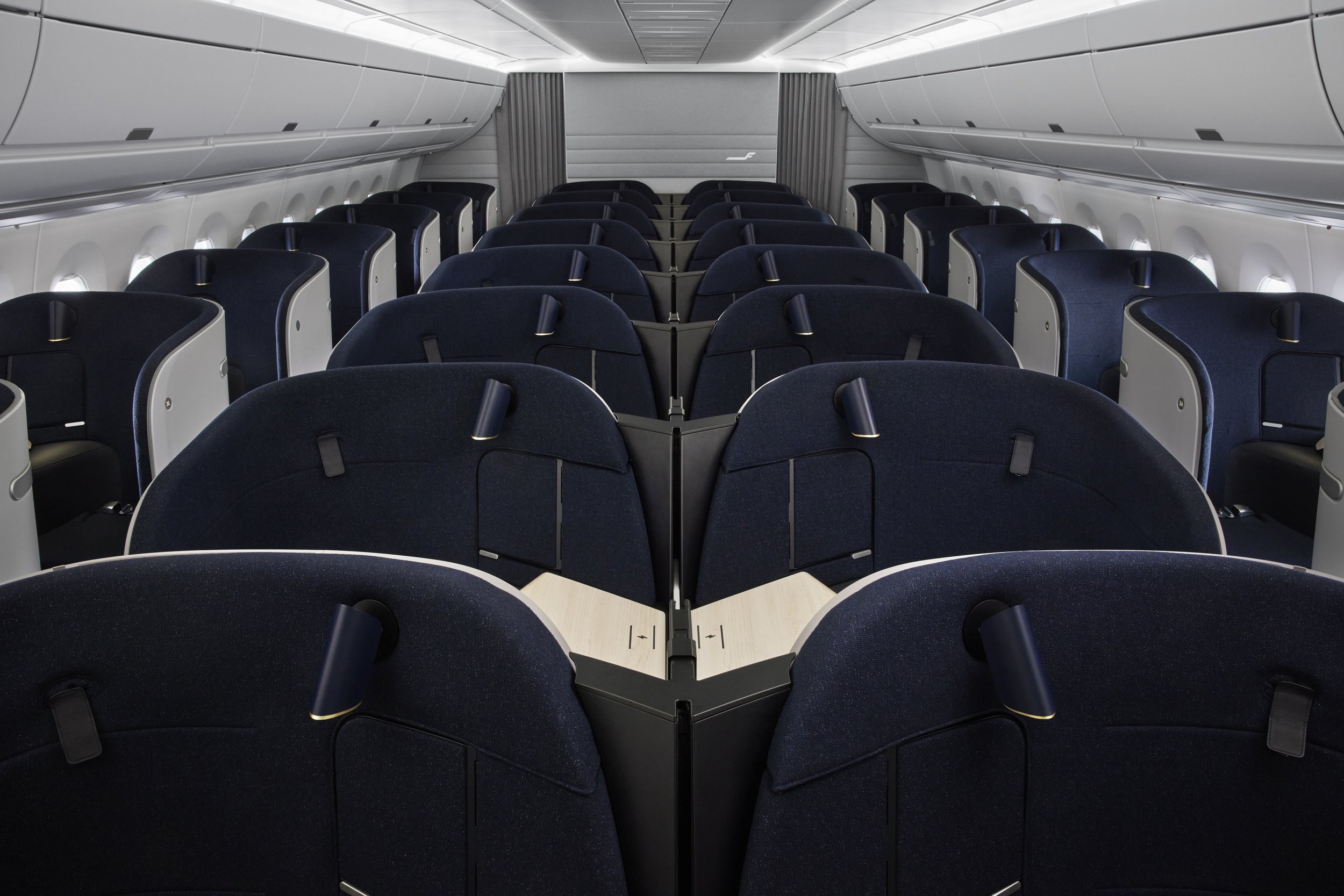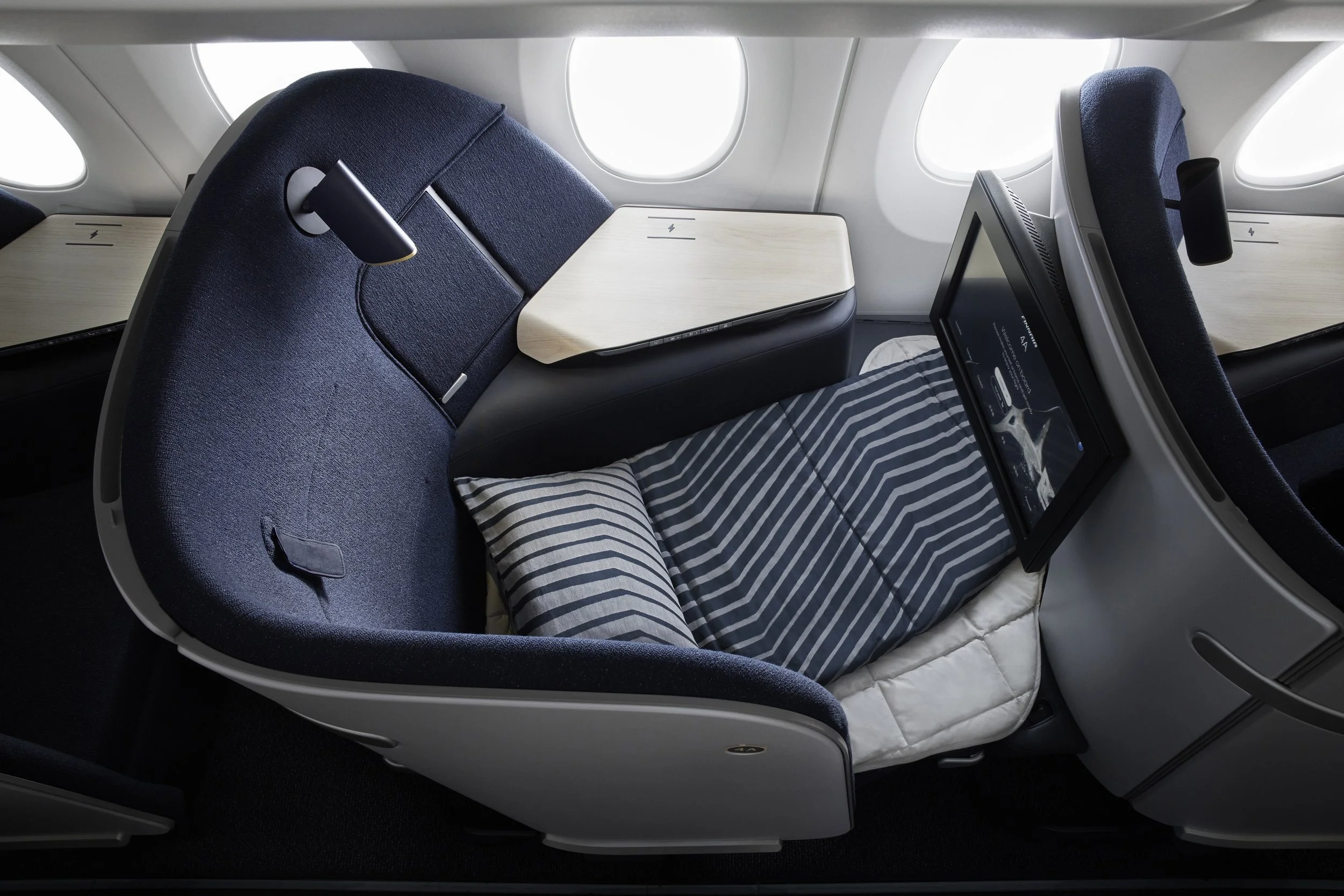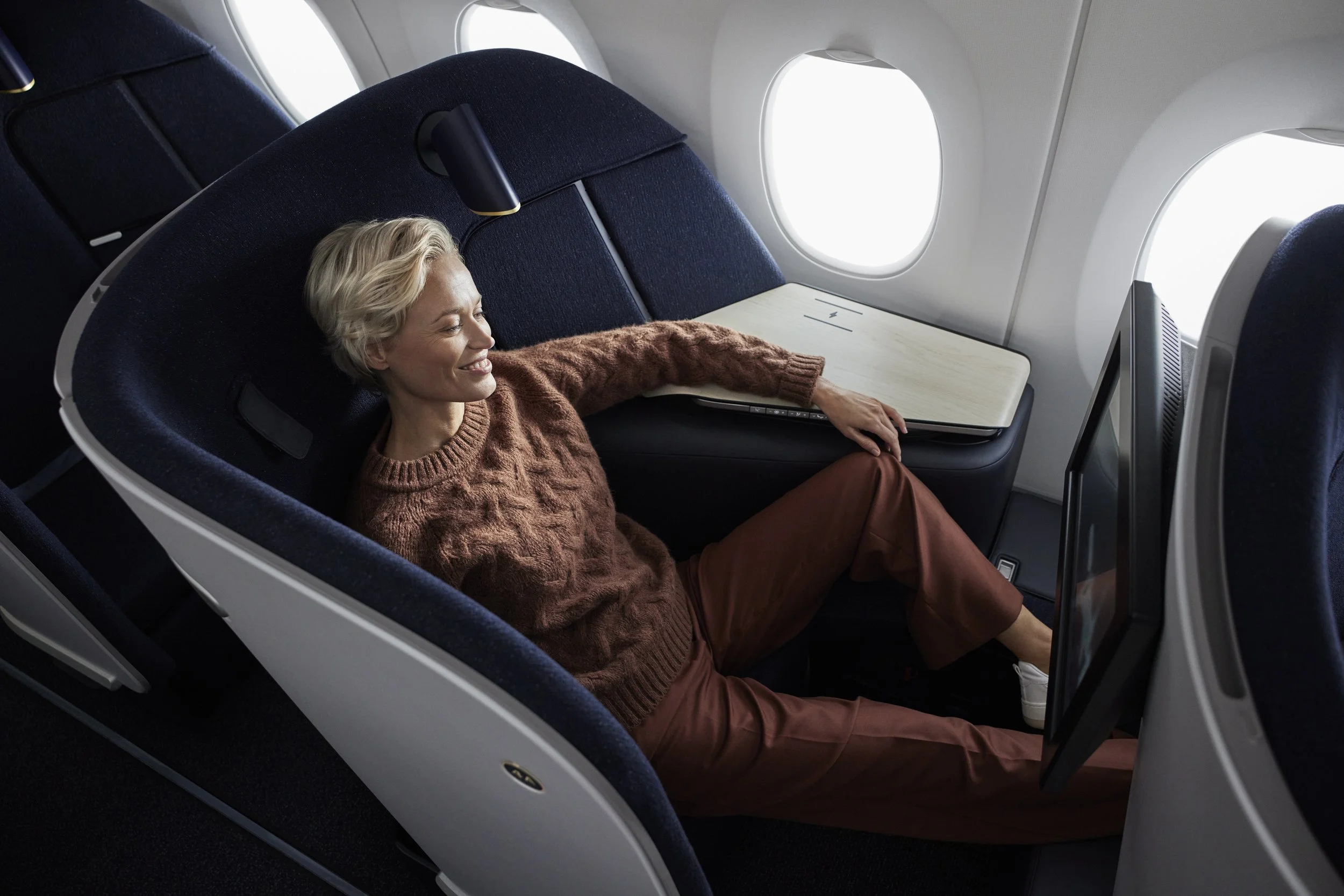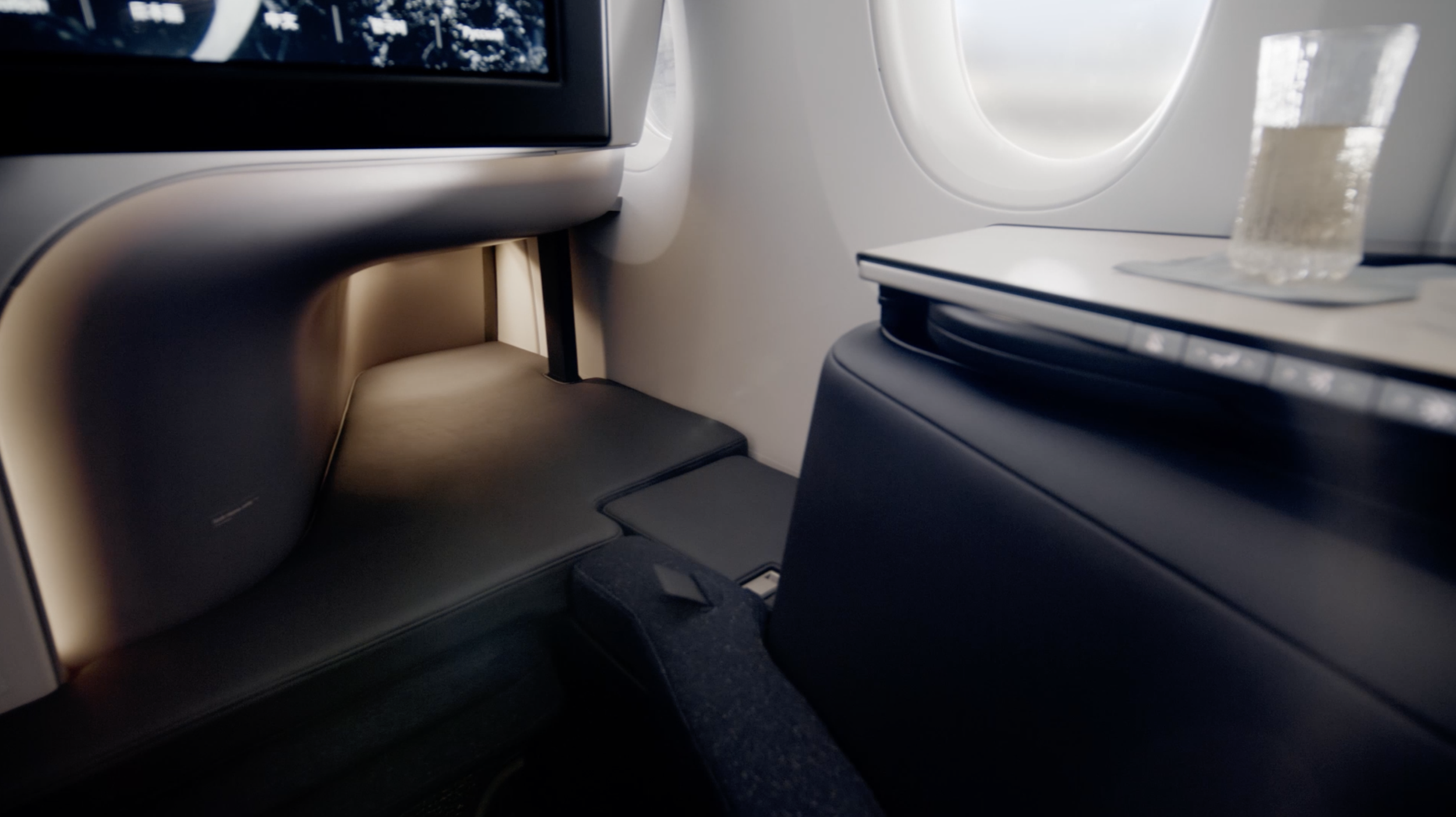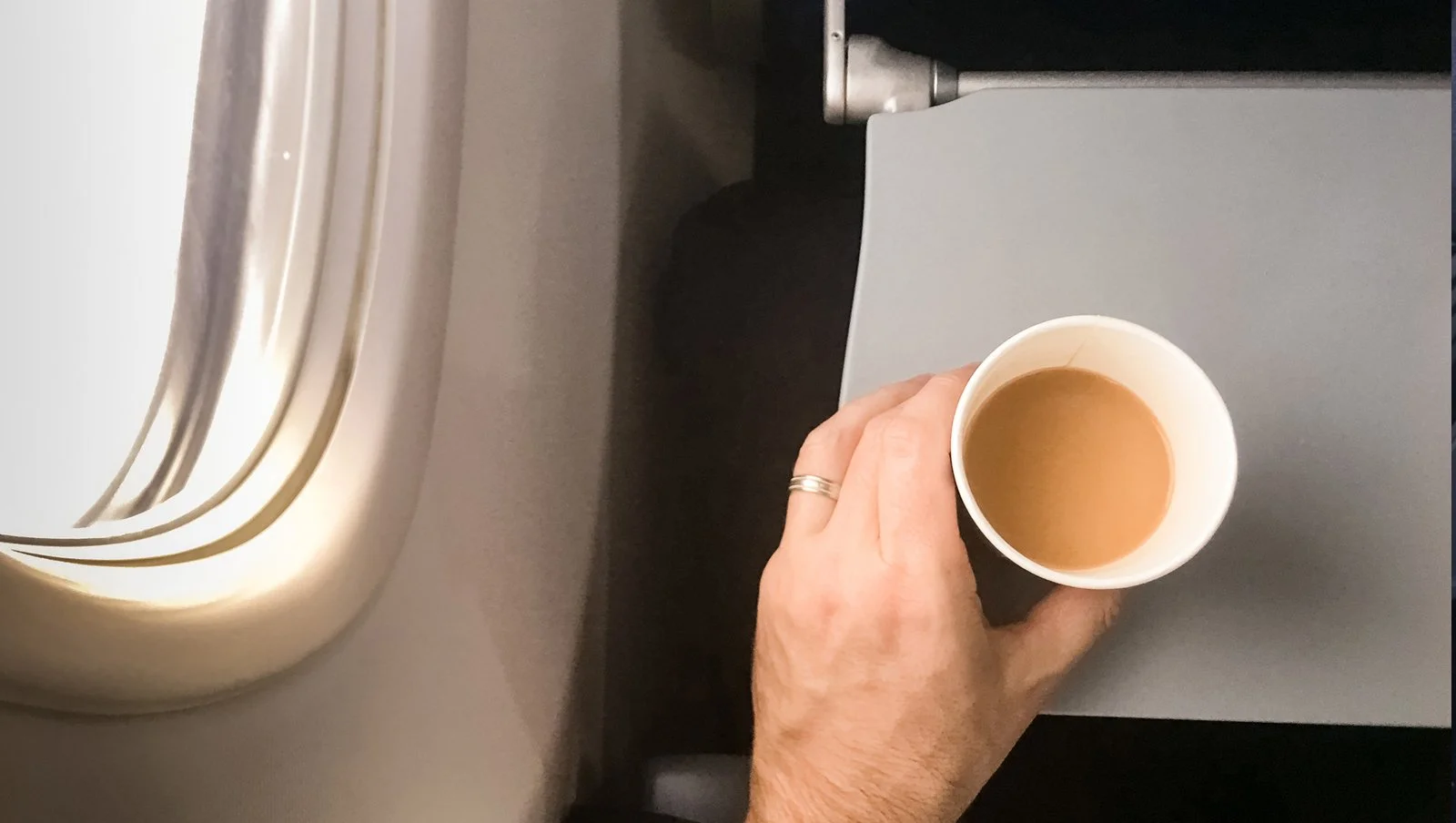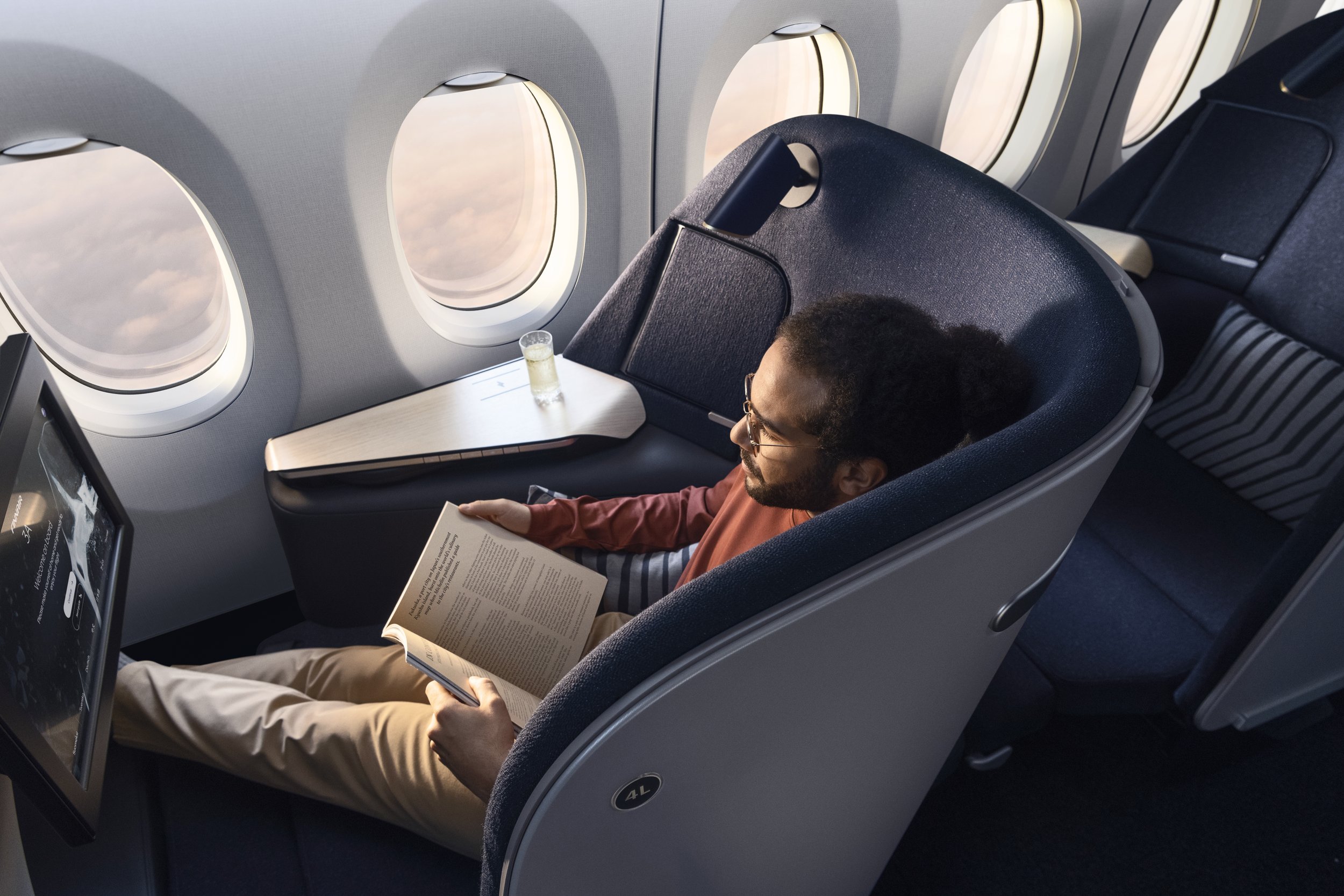
The details behind AirLounge
Design elements that make this business class seat so distinctive
When Finnair announced the launch of the AirLounge™ seat as part of its redesigned business class cabin for A330 and A350 airplanes, the industry was quick to notice the fundamental departure in design from traditional business class products flying around the world today.
Decidedly residential, the seat’s intent is to bring the comforts of home to the sky by replicating the feeling of nestling into familiar home furniture.
While the innovative design and form of AirLounge is impressive, it’s the resulting functionality that provides an array of benefits balanced to both passengers and airlines that truly sets it apart – something rarely seen or available in the market.
A radical design brought to life
The origin of AirLounge owes itself to a collaboration around a novel design conceived by London design agency PriestmanGoode.
PriestmanGoode had been working to bring the design ethos of residential furniture to aircraft seating for some time. They have collaborated with Collins to develop a number of first class concepts which had been realized for airline customers.
“Many aircraft seats are quite similar to each other,” says Nigel Goode, founding director and chairman of PriestmanGoode. We sought a straightforward and comfortable design to create a seat that reflected the look, feel, comfort and function of living room furniture found in people’s homes.”
“PriestmanGoode showed us the initial design and we fell in love pretty quickly,” said Kent Kroener, director of seating sales for Collins Aerospace. “We saw it as a great opportunity to fill the niche between first and business class.”
Given such a departure from traditional seating, initial development phases required a more involved approach in bringing the design to life.
“Much of our time was spent creating physical mockups, rather than drawings,” said Goode. “We needed to get down and experience the seat environment ourselves to get an idea of our successes and what should be tweaked.”
The result is furniture that thrives in simplicity, providing outsized benefits to both travelers and airlines, from more passenger space to significant weight savings. These benefits are led by three main design elements.
Contouring to optimize passenger space and comfort
Perhaps the most notable design feature is AirLounge’s cocoon-like shell structure, which serves as the ergonomic seat back, clearly defines the space’s privacy and serves as an effective noise barrier.
The higher and wider seat gives passengers greater freedom of movement and most importantly, the ability to adjust to a variety of seating and lounge positions rarely afforded by conventional seats.
“The contoured shell carves out more living space, allowing passengers to interact with the seat in a way unique to each individual,” says David Kondo, head of customer experience, product design at Finnair. “This is a fundamental evolution to the form and function of business class seating.”
Getting the contours of the shell right was a big focus, given the need to accommodate a variety of passenger types and many sitting and lounging positions.
“We used university ergonomic research with data points from hundreds of people of varying sizes to come up with the best shape to most effectively optimize the comfort of the greatest number of people,” explained Kroener.
The most striking departure from traditional business class seats is the absence of a reclining feature since the functionality of the shell precludes the need for it. This is a non-issue to Goode, who points out most living room furniture doesn’t have recline and adjustment mechanisms.
“People don’t spend all day on their sofa and then get up saying their back hurts. They’re moving around a bit and adjusting to a variety of positions to stay comfortable. AirLounge provides that same functionality, comfort and flexibility.”
— Nigel Goode
Less is more
The simplicity of the contoured seat shell is underscored by the use of composites to create strength while reducing weight and seat maintenance needs, effectively reducing fuel burn and limiting time spent on repairs.
Removal of the recline function paved the way for the removal of actuation systems, saving several kilograms per seat, freeing up usable space within the seat’s footprint and increasing the living area and in-seat stowage options for passengers.
It also makes AirLounge a more reliable seat; fewer parts experiencing wear and tear effectively reduces airline maintenance costs and downtime.
Small details with big impact to passenger comfort
A closer look reveals a detail that might initially go unnoticed but is a key component to passenger comfort within the space.
On the console side of the seat is a narrow extension of the furniture, bridging the seat to the footstool and serving as a full-length leg rest.
“That extended section of furniture is a big differentiator and was a critical factor in our design,” explains Goode. “Passengers can comfortably rest their leg on the footstool while that little peninsula supports the back of the knee,” continues Goode. “This all but eliminates the fatigue and knee pain one might experience propping their leg up without that support – for instance, on their coffee table at home.”
The bridge feature integrates seamlessly with infill panels that can be raised to create a large, comfortable bed for passengers to stretch out and rest.
Collaboration is key
From the outset, bringing a revolutionary seat like AirLounge to market took prowess in design, manufacturing, testing and certification. Perhaps most importantly it required detailed expertise, trusted collaboration across industry partners and a commitment to best serve the end-user to be successful.
“The most important element in all of this was collaboration. Without all sides completely aligned and working towards a common goal, none of this would have been possible,” explains Kroener.
“From PriestmanGoode’s initial design to Collins engineering, manufacturing and certifying the physical product; all the way to partnering with Finnair and their design agency, Tangerine, on final design details to fit within the overall the Finnair brand and cabin product – it’s just a colossal effort to get to the finish line. And it’s only possible if each stakeholder is fully engaged and working together.”
All images courtesy of Finnair
More Aircrafted stories:

